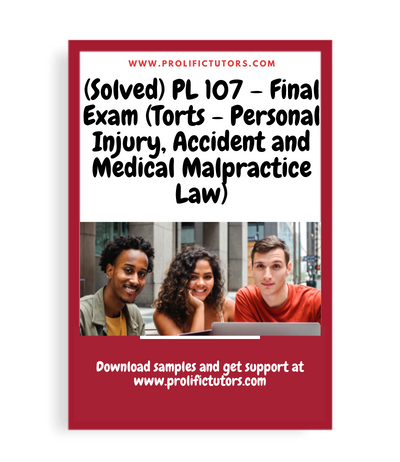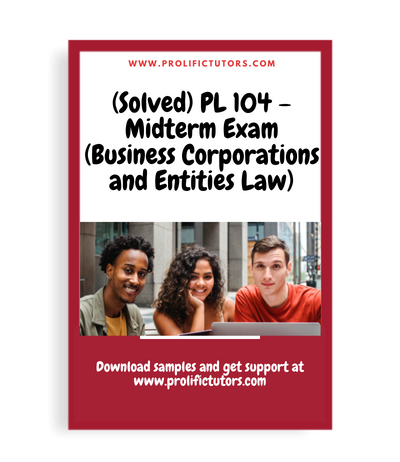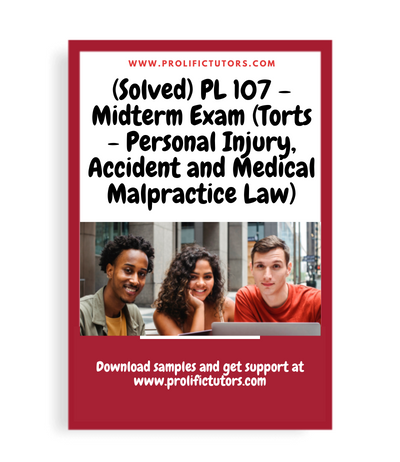Description
PL 107 Torts – Personal Injury, Accident and Medical Malpractice Law (36 Hours)
Students analyze the legal concepts of intentional torts to persons and property, negligence and special duties, strict liability, defamation, slander, invasion of privacy, nuisance, fraud, as well as the various defenses associated with these torts; workers’ compensation law; and medical malpractice law.
Tort law section 1
Lesson 1a (45 min)
- Intentional torts
The tort of assault
Assault – to place somebody where there is apprehension of immediate harmful or offensive conduct.
May not involve direct contact e.g., approaching someone with a baseball bat.
In the mind of the victim – the perpetrator has an apparent ability to create harmful or offensive conduct. (e.g., the classic toy gun situation – if you wave a toy gun at someone and it creates apparent ability on them then if they respond with deadly force such force would be justified).
Subjectivity in the mind of the victim – response is based on subjective judgement of the victim.
Defenses for intentional torts
Transferred intent – should you commit an intentional tort against the wrong part, it is no defense. E.g., hitting person, A instead of person B (unintended victim) cannot be a defense to the actions.
Elements of intentional tort of assault
Act by defendant, apprehension of injury, offensive conduct, apparent ability, subjectivity, transferred intent, causation, damage.
- Unintentional torts (negligence)
Act by defendant, intent, harmful of offensive contact, causation, damages.
The tort of battery.
Battery – entails harmful offensive physical “contact”.
(Often people are charged with assault and battery because the two torts go hand-in-hand).
Ordinary sensibilities – harmful contact is defined as per what a person of ordinary sensibility would think of it.
Indirect/direct contact – harm can be committed via direct or indirect contact. Indirect contact examples include setting a trap, pulling a chair off as someone is sitting, digging a hole for someone to fall in, etc.
Apprehension need not be an element. An example would be battery against a comatose person; apprehension would not be present. Or a sniper shooting someone.
If the battery is committed maliciously, it gives rise to punitive damages as opposed to actual damages.
Punitive damage is only present when malice is an element of a tort.
Lesson 1b (1hr 22 min)
- Tort of abuse of process – intentional tort
Abuse of process – use of the legal system for things outside the original intended purpose. Such as issuing a traffic ticket or warrant outside the legal limits – without probable cause. (may not involve subjecting them to judicial proceedings).
Elements
- Single act
See More…
This study notes pack contains short notes for all the lessons (1a to 10b). It will save you a ton of time watching the entire 36hrs of video lessons. It will help you prepare for the Midterm and Final exams under tort law (PL107 New York Paralegal School).
If you require answers to the midterm or final exams just search for PL107 in the search bar above.





![[Solved] 6018SSL – Ethical Dilemma Of An International Leader](https://prolifictutors.com/wp-content/uploads/2022/08/Solved-6018SSL-–-Ethical-Dilemma-Of-An-International-Leader.png)



Reviews
There are no reviews yet.